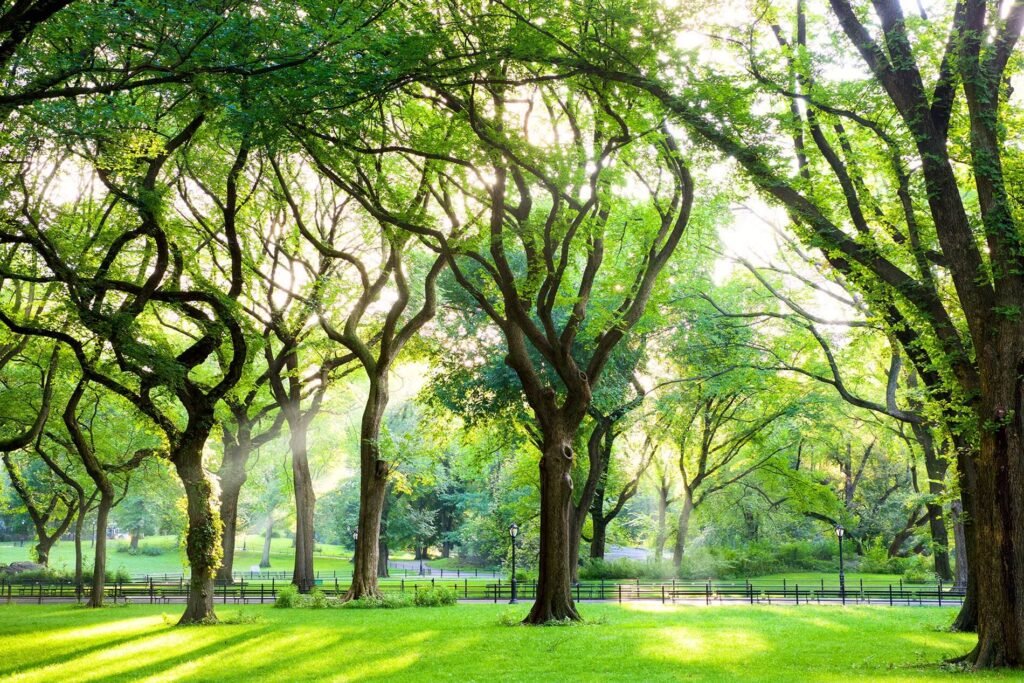North Carolina’s American elm tree stands tall and proud, resembling an elegant vase. This magnificent native tree can reach heights of 40 to 80 feet with an expansive 60-foot spread. But sadly, these giants are now less common due to the persistent threat of Dutch elm disease.
Seeing these magnificent trees succumb to disease is disheartening, especially when they once lined our streets, offering shade and beauty. So, let’s dive deep into understanding Dutch elm disease, its speed in taking down our precious trees, and the right way to handle affected elms. Moreover, we’ll tackle the question on every North Carolinian’s mind: “Are all elm trees prone to Dutch elm disease?”
Spotting Dutch Elm Disease in Your Trees
Sure, many of us can identify an elm tree. But is it recognizing the symptoms of Dutch elm disease in one? That’s a bit trickier.
Earthworks Tree Services advises looking out for these red flags:
- Leaves on outer branches turning yellow, wilting, then turning brown, progressively moving down toward the trunk.
- A sudden sprinkle of fallen leaves in summer.
- The appearance of symptoms usually peaks in late spring or early summer.
Do all elm trees get this disease? Good news: While Native American and European elms are vulnerable, Asiatic elms tend to resist them.
Recognizing a Dying Elm
How can you tell if your elm tree is on its last leg due to the disease? Dead elm tree bark is usually not brown. Instead, it becomes grayish, may crack, or even split away from the tree.
Dutch elm disease affects the tree’s water transport system, leading to wilting leaves and, ultimately, the tree’s death. Depending on when it’s infected, a tree might hold on for just a year or push through for two.
How the Disease Spreads
Elms have a unique root system, which allows them to connect to neighboring trees. This connection, unfortunately, lets the disease spread like wildfire from one tree to the next.
Additionally, bark beetles, tiny carriers of the disease, move spores from tree to tree as they snack on the bark. These little pests love fresh cuts on trees, explaining why it’s not advisable to prune elms during their growth season.
Safely Removing Trees Affected by Dutch Elm Disease
If Dutch elm disease infects a tree, it must go—pronto! Not just the tree but every piece of wood pruned from it must be thoroughly destroyed. Why? Even dead, these trees can attract beetles, which could further spread the disease. Methods like chipping or burying the tree can prevent further transfer. If you’re thinking of turning it into mulch, let the chips cure for about 8-9 months first.
Controlling and Managing Dutch Elm Disease
Caught the disease early? Great! Swift action is key. But it’s not all sunshine and rainbows. Once diagnosed, a tree with Dutch elm disease should be removed ASAP.
To stop the disease from spreading, it’s essential to cut off root connections between the infected tree and its healthy neighbors. This job requires a specialist touch. While preventive injections can safeguard elms from beetles, they don’t shield them from disease spread through root connections. Only trained, ISA-certified arborists should perform these treatments.
Keeping Elm Trees Safe from Dutch Elm Disease
Love your elm trees? Please keep them in top shape with routine care. Partner with ISA-certified arborists for the right pruning and fertilization techniques. They’ll also detect issues before they turn catastrophic, ensuring timely tree removal and prevention of disease spread.
To decrease the risk of Dutch elm disease, always sterilize equipment before trimming each tree and avoid pruning during their growth phase. Also, consider using a preventative fungicide on susceptible elms. And if you’re thinking of adding or replacing elms, opt for varieties resistant to Dutch elm disease.
With the increasing number of tree removal companies, always ensure you choose a trusted name like Earthworks Tree Services for expert advice and services.

